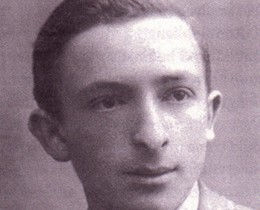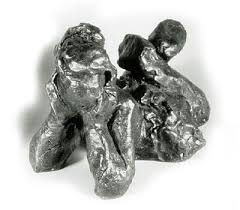
Shalom & Varda Yoran
Shalom Yoran (born as Selim Sznycer in Poland, 1925-2013) was a Holocaust survivor and former partisan. He met Varda through her twin sister Galia (Gissia) while in the Israeli Air Force, and they married in 1954. Varda is an acclaimed Israeli-American sculptor. Her parents were Russians who escaped famine and pogroms to China, where she was born (as Rose Granevsky) in 1929.
Varda collaborated with Shalom in writing his memoir ‘The Defiant’, published in 1996. She wrote ‘AL - the Israeli Prometheus’ about an American-Israeli who created the aviation history of Israel. In addition, she established the Rose Art Foundation, a non-profit organization donating recliners on wheels to immobile patients throughout the USA.
Shalom Yoran

Shalom was a survivor of the Holocaust. The family felt the brunt of Nazi brutality from the day the Nazis attacked Poland, and they began to flee from place to place, for three years. The Nazis finally caught up with the family in a little town close to the Soviet border. The parents were murdered, along with 1054 Jews in the Oblava, on Erev Yom Kippur in 1942. Shalom and his older brother escaped into the nearby forests, spent the first winter hiding out in an abode they constructed with three other young men.
In the spring they connected with a partisan unit and began to actively participate in the fight against the Nazis. They blew up trains, ambushed patrols, threw grenades into the bunkers, and cut down lines of communication. Shalom was 17 years old. After the war, he managed to cross Europe illegally, using forged documents, and in 1946 smuggled through the British blockade into Palestine. He immediately wrote his memoirs, because he had to fulfill his mother’s request that they should try to survive, avenge the death of their parents, and let the world know what happened. He had to do it before the memories were forgotten or distorted with time. He scribbled everything to the last detail, on scraps of paper and pages torn out of his cousin’s school notebooks. Then he began to rebuild his life and put his memoir aside.
He joined the Air Service (precursor of the Israeli Air Force) and helped build the first two airplanes from the scraps of damaged airplanes that the British left in their camps when they departed Palestine. He joined the Israeli Air Force in 1948, was sent with 40 other young men to study aircraft repair and maintenance in Spartan School of Aeronautics in Tulsa Oklahoma, and also became a licensed flight engineer. These young men created the air force school for repair and maintenance in the Mifratz (Haifa), which exists to this day. Seven years later, upon discharge from the air force, he joined Bedek, later known as Israel Aircraft Industries. First he created their training program and gradually rose to the position of Senior Vice President, and the first director of the Division of Maintenance, Overhaul and Repair, keeping the Israeli Air Force planes in prime condition and also working with at least 20 countries around the world. What started as a small company in 1953, (about 500 employees when he joined) grew to 29,000 during the 22 years that he worked there.
He left Israel Aircraft Industries in 1976, spent two years managing an aircraft company working mainly with Iran Air, and in 1978 relocated to New York, to become chairman of ATASCO (Aircraft Trading and Servicing Co), a small private company that turned out to be very successful. Five years after he wrote his memoirs, he found them in a scruffy little suitcase, brought them to the States, and with the help of his wife, translated them into English, and THE DEFIANT was published in 1996. By now it has been translated and published in Hebrew, Chinese and Russian.
Varda Yoran – Artist

Photo credit: Ana De Orbegoso
Israeli-American artist Varda Yoran creates dynamic, emotive sculptures that explore the simultaneous simplicity and complexity of the realms of emotive expression and physical movement. A hallmark of Yoran’s sculpture is her definitive use of shape, whether demarcated by sharp edges, smooth surfaces, gentle curves, or undulating lines. Working in an array of materials, including stone, wood, Plexiglas, wax, and bronze, Yoran stays away from superfluous detail and rather focuses on capturing and elucidating the feeling and power contained within each three-dimensional composition.
Most of Yoran’s work is concerned with exploring the universality of emotions and how this comes to intersect with and be expressed by the fluidity of physical bodies in motion. In addition, her sculpture has been influenced by her diverse cultural background, since she has lived in places as varied as China, Israel, the UK and the U.S. Overall, this art is meant to tell a story and to provide insight into what it is to be human in these modern times.
As Yoran explains, “To me, art is a language, non-verbal communication. My voice is sculpture.”


















